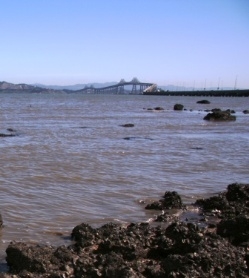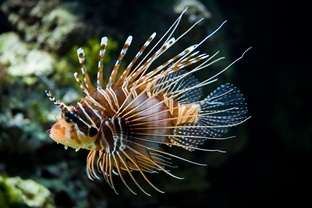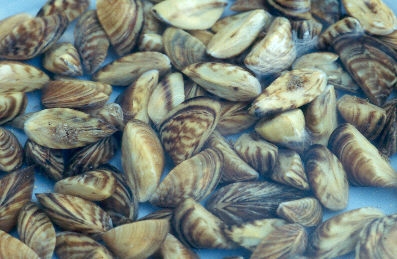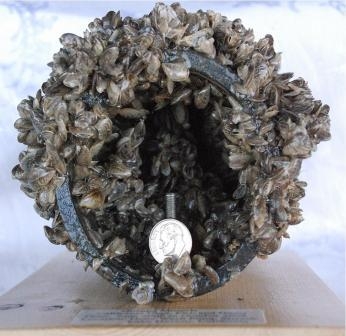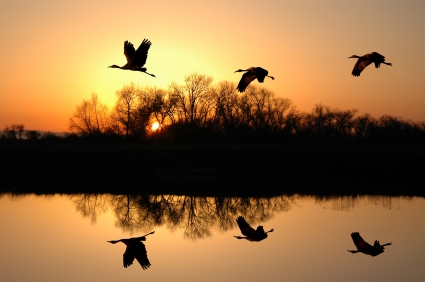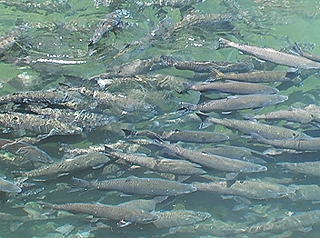Posts Tagged: aquatic
Bodega Marine Lab keeps watch on ocean temperatures
Ocean waters are warming, sea level is rising, seawater is becoming more acidic, and shoreline erosion is intensifying. The world’s oceans are reacting to increased carbon dioxide and other greenhouse gases in the earth’s atmosphere.
“The physical and chemical environment of the ocean is changing with the climate,” said John Largier of the UC Davis Bodega Marine Laboratory. “This affects ecosystems — like tidal marshes and coral reefs that protect us from storms and flooding.”
The ocean brings stability to the earth’s climate. It heats up and cools down more slowly than the land and the air. With climate change, the ocean absorbs excess heat trapped in the earth’s system by the increased concentration of gases in the atmosphere.
As seawater warms, it expands. The increase in the ocean’s heat content has contributed to one of the most visible effects of global warming — rising sea level. Thermal expansion, along with melting polar ice caps and glaciers, has led to global sea level rise of more than seven inches over the last century.
“When the ocean begins to warm up, then you know that the earth’s climate is changing,” said Largier, a professor in the Department of Environmental Science and Policy. “Even if we stop putting greenhouse gases into the atmosphere right now, the ocean has warmed up, and it will take centuries for it to cool down. People don’t realize that we’ve already made a long-term commitment to climate change.”
At the Bodega Marine Lab, Largier and other scientists are studying the regional impacts of climate change on the waters off California, which include an increase in coastal upwelling. Driven by winds, upwelling pulls cold water and nutrients from the ocean depths to the surface along the shore and contributes to the “marine layer,” the blanket of cool moist air that moderates California temperatures. Largier’s research shows a trend toward stronger winds and an increase in upwelling since 1982, leading to cooler waters off central and northern California.
“Worldwide, the ocean’s surface water is getting warmer, but in California, the ocean is getting colder near shore,” said Largier. “This is intriguing because it shows that climate change is not going to have the same effect everywhere. There will be regional differences.”
This article was condensed slightly from UC Davis “CA&ES Outlook” magazine. Read the full article on page 7.
Read John Largier's scientific advisory group report on how changes in the ocean might affect two valuable marine sanctuaries off the northern California coast: "Climate Change Impacts: Gulf of the Farallones and Cordell Bank National Marine Sanctuaries"

John Largier along the northern California coast. (Photo: Jennifer Sauter/UC Davis)
Don’t flush those fish!
Releasing aquarium fish into local waterways — or down the toilet — can damage aquatic ecosystems in a number of ways. The fish themselves can become an invasive species, they can disrupt habitats for other fish and aquatic species, and they may introduce secondary problems such as harmful pathogens or other aquarium species (seaweed, snails) into the waterways.
At least 13 of the 102 aquarium species that are imported into California have been introduced into California marine waters, according to a recent report by Susan Williams, professor in the Department of Evolution and Ecology at UC Davis and a marine ecologist the Bodega Marine Laboratory. These introduced species have a high success rate (69 percent) in establishing themselves.
Two very invasive species — the predatory lionfish and Caulerpa seaweed (aka “killer algae”) — have reportedly come from the aquarium trade. The lionfish, which has established itself along the East Coast where it eats smaller fish and threatens reef ecological systems, has not yet reached California waters, but the Caulerpa seaweed cost California more than $6 million to eradicate from two Southern California lagoons a decade ago.
At least 34 aquarium species were found to be potential invaders in California marine waters.
“Globally, the aquarium trade has contributed a third of the world’s worst aquatic and invasive species,” Williams said. "Lionfish are voracious predators in their native habitats, and in their invaded habitat any predator is a potential threat to the native ecosystem."
Williams’ advice: "To avoid releasing aquarium species into natural water, don’t dump your aquarium where they can become an expensive and harmful pests.”
She said that people should contact the vendor where the fish was purchased or the California Department of Fish and Wildlife to learn how to dispose of aquarium species responsibly.
Learn more:
- Complete UC Davis news release, by Kat Kerlin
- Our AmazingPlanet report
- Environmental News Network report
- Science on NBC News report
Zebra mussels and quagga mussels threaten California water systems
Some of California’s many introduced species — plants, animals, insects, and aquatic organisms — have marked impacts on ecological systems.
Invasive aquatic organisms can impact fish, shorebirds, marsh plants, and other wetland species, and alter functions of lakes, watersheds, floodplains, and coastal ecosystems.
Estuarine ecologist Ted Grosholz, a UC Davis professor and Cooperative Extension specialist in the Department of Environmental Science and Policy, is an expert on invasive species and addresses outreach education on zebra mussels and quagga mussels.
These two invasive, freshwater Eurasian mussels—zebra mussels and quagga mussels — could have a profound impact on California’s lakes and water distribution systems.
Both quarter-sized mussels showed up in California about six years ago. They attach themselves to water conveyance systems — pumps, pipes, dams, aqueducts, and fish hatcheries — and proliferate. According to Grosholz, “our drinking water and agricultural irrigation systems could be shut down quickly by these organisms.”
Los Angeles water districts are coping with the mussels, which are in Southern California watersheds, and reservoirs and canals of the Colorado River. The larval stage of the mussels disperses readily in water, so it gets moved around easily. There is tremendous concern about their potential spread into Lake Tahoe, and they have recently shut down a reservoir near San Jose. These mussels have cost the state tens of millions of dollars.
Zebra and quagga mussels pose a serious ecological threat in California. In the Great Lakes, where they became established 25 years ago, they have removed phytoplankton — a food source for juvenile fish — thereby impacting the food web. They have also concentrated the environmental contaminant botulism, resulting in massive kills of diving ducks and shorebirds.
Aquatic invasive species are moved long distances by ships — in ballast water, hulls and attached to ships’ surfaces. Within California they can be moved by recreational and fishing boats, trailers and other equipment.
“Once aquatic species are introduced, the cat is out of the bag — they spread easily, and they’re very difficult to control,” notes Grosholz.
Since the state doesn’t have the resources to adequately enforce zebra and quagga mussel control, areas such as Clear Lake and Fallen Leaf Lake are establishing local mandatory vehicle and boat inspection programs.
Grosholz works closely with resource agencies and other organizations to develop programs aimed at identifying and reducing the spread of invasive aquatic organisms. “It’s important to increase awareness of these species because they’re such a problem,” says Grosholz. “Their impact on ecosystems is big, and early control is very important.”
To read more about invasive aquatic species, including zebra and quagga mussels, see:
CA&ES Outlook magazine, pages 4–7
Quagga/Zebra Mussel Invasion, UC Cooperative Extension Coastal Resources
Quagga and Zebra Mussels, California Dept. of Fish and Game
Quagga and Zebra Mussel Prevention Program, San Luis Obispo County, California
Quagga and Zebra Mussel, Calif. Dept. of Boating and Waterways
Analysis says canal could create 129,000 jobs
Supes take stand against aquatic invasives
Kyle Magin, The Union
Nevada County supervisors resolved to support an inspection program for aquatic invasive species, reports Kyle Magin for The (Grass Valley) Union. The article discusses a report by Greg Giusti, UC Cooperative Extension forest and wildlands ecology advisor, which recommends water managers in the state adopt uniform measures regarding boat inspections.
Bleak future for spring-run Chinook salmon
Warming streams could spell the end of spring-run Chinook salmon in California by the end of the century, according to a study by scientists at UC Davis, the Stockholm Environment Institute (SEI) and the National Center for Atmospheric Research (NCAR).
There are options for managing water resources to protect the salmon runs, although they would impact hydroelectric power generation, said UC Cooperative Extension associate specialist Lisa Thompson, director of the Center for Aquatic Biology and Aquaculture at UC Davis. A paper describing the study was published online recently in the Journal of Water Resources Planning and Management.
“There are things that we can do so that we have the water we need and also have something left for the fish,” Thompson said.
Working with Marisa Escobar and David Purkey at SEI's Davis office, Thompson and colleagues at UC Davis used a model of the Butte Creek watershed, taking into account the dams and hydropower installations along the river, combined with a model of the salmon population, to test the effect of different water management strategies on the fish. They fed in scenarios for climate change out to 2099 from models developed by David Yates at NCAR in Boulder, Colo.
In almost all scenarios, the fish died out because streams became too warm for adults to survive the summer to spawn in the fall.
The only option that preserved salmon populations, at least for a few decades, was to reduce diversions for hydropower generation at the warmest time of the year.
“If we leave the water in the stream at key times of the year, the stream stays cooler and fish can make it through to the fall,” Thompson said.
Summer, of course, is also peak season for energy demand in California. But Thompson noted that it might be possible to generate more power upstream while holding water for salmon at other locations.
Hydropower is often part of renewable energy portfolios designed to reduce greenhouse gas emissions, Purkey said, but it can complicate efforts to adapt water management regimes to a warming world. Yet it need not be all-or-nothing, he said.
“The goal should be to identify regulatory regimes which meet ecosystem objectives with minimal impact on hydropower production,” he said. “The kind of work we did in Butte Creek is essential to seeking these outcomes.”
There are also other options that are yet to be fully tested, Thompson said, such as storing cold water upstream and dumping it into the river during a heat wave. That would both help fish and create a surge of hydropower.
Salmon are already under stress from multiple causes, including pollution, and introduced predators and competitors, Thompson said. Even if those problems were solved, temperature alone would finish off the salmon — but that problem can be fixed, she said.
“I swim with these fish, they're magnificent,” Thompson said. “We don't want to give up on them.”
Other co-authors of the paper are graduate student Christopher Mosser and Professor Peter Moyle, both in the Department of Wildlife, Fish and Conservation Biology at UC Davis. The study was funded by the U.S. Environmental Protection Agency.

